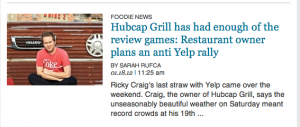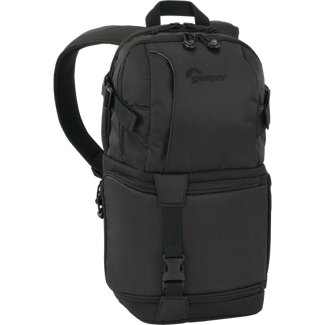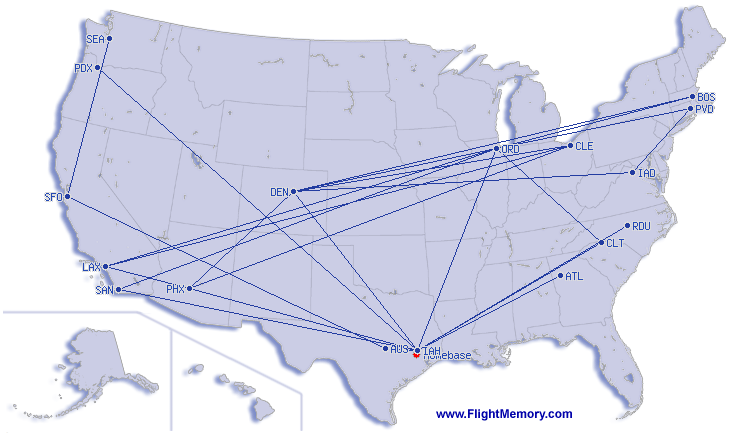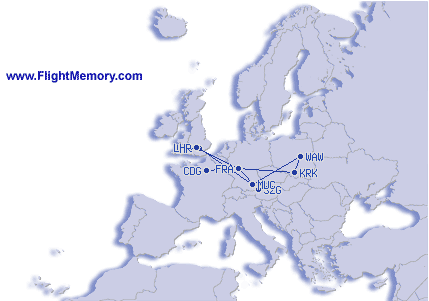“9 Businesses” is a great documentary about nine different small businesses in the Detroit area. It focuses on the idea that small businesses grow and change the community. I would say the future of Detroit is dependent on the small business to flourish.
Year: 2012
On Image Use, Abuse, and Where We’re Headed
I think we have all done it, at least once, I know I have. Use an image on a website, blog, etc. without the permission or consent of the photographer. A quick search through this site shows an instance or two where I have done exactly that (they’re noted and will be dealt with). In my own experience it’s been about speed and ease of finding the images on search engines that make this such an attractive method of putting images on my blog. But, it’s wrong.
I’ve mulled over this post for the past few weeks and have actually rewritten it a number of times. My perspective is two-fold, as an (amateur) photographer I take pride in my photographs and want to see them well represented, but as a blogger I want an easy route to getting perfect images for my site. After a recent case of unauthorized image use, I thought it was appropriate to speak up on what I am beginning to see trend into a bigger and bigger issue.
Around January 19, 2011 I noticed this tweet by Twitter user Kyle Nielsen. I follow Kyle for his quick hits of Houston news and info and this particular tweet caught my eye because it involved Hubcap Grill, a local place I frequent. When I looked at the image, I immediately realized that it was the picture of Hubcap owner Ricky Craig that I had taken for a Loop Scoop article. At first, I was a little dumbfounded. The image had clearly been edited, as the original on The Loop Scoop has a green border. I contacted Paul at The Loop Scoop to ask if he knew anything about it, to which he replied that he did not. CultureMap had taken the picture without my consent or Paul’s.

Maybe my immediate response on Twitter was a little over the top. I let loose, asking others why CultureMap would do such a thing. They have a team of photographers, writers, and editors, why would they need to take an image from another website? The responses I received were from a few people who had similar experiences with CultureMap. Some were more vocal than others. As the night drew on, I decided that per my friend Patrick’s advice, the next morning would see me drafting a DMCA takedown notice.
While I was sleeping I received a couple of messages from CultureMap. One asking if I wanted the image removed and another saying the image had been removed from the article. I also had an e-mail in my inbox from Clifford Pugh, Editor-in-Chief of CultureMap. It read as follows:
Dear Mr. Segraves,
Your Twitter thread from last night was forwarded to me, so I wanted to reply to you. I was a bit taken aback by the tone of the comments and hope if this ever happens in the future — which I sincerely hope it doesn’t — we can have a civil discussion on the subject.Since CultureMap launched in 2009, we have posted 50,000 photos and I can honestly recall only two or three times that a photographer asked us to remove a photo. So the comment that this happens all the time just isn’t true.I’m proud of the fact that we make every effort to give credit where credit is due. We will continue to do our best to make sure we give credit and if we mess up, we will immediately address the situation.Your photo was very nice. I wish you the best in your future photography endeavors.—
Clifford PughEditor-in-Chief
Since they had removed the photograph I decided to not send a DMCA take-down notice and just go about my day, but I could not help but dwell on the above e-mail. Mr. Pugh seems to think that my comments on Twitter were uncivil. I am sorry he feels that way, I thought my photograph being used without my consent was uncivil and reacted accordingly. The two other paragraphs in his e-mail are very important as well. The second, stating that CultureMap has 50,000 photos and has only been asked to remove a photo a few times, is completely misleading. “Having” something means it’s yours. And the fact that only a few people have asked to have their photos removed could also mean a lot of people have no clue their photographs are on your website. The third paragraph is also unsettling. “We will continue to do our best to make sure we give credit …”, great, I am glad you are crediting photographers but what if the photo was sold to the original person using it? What if it was licensed (take a look around their website, there seem to be a lot of AP/Reuters images)? More than credit is necessary in those cases. As well as credit, is CultureMap paying the photographer for their work? Did they even ask if they could use an image? Had I not seen a tweet about the image, I would have never seen that CultureMap had used it. How many other photographers have not noticed their work being used on sites that had not requested permission?
The core problem in this entire situation is that it is implied that it’s the onus of the photographer to protect their work. That notion is utterly ridiculous. Sure, some responsibility of ownership does fall on the photographer but if every photographer completely protected their work then all you would see on the internet is pictures with giant watermarks through the middle of them. The key is for websites, bloggers, etc. to use images that they have either created themselves or those that they have permission to use. That allows photographers to focus on the image thieves.
Had CultureMap taken a few minutes to send a note to The Loop Scoop to ask who took the photograph and for that person’s e-mail, I could have denied permission and they could have moved on. Instead, they searched Google, got an image they liked, edited it, and used it. What this takes is honest people doing honest work. If we are going to stand up against things like SOPA and PIPA then we need to be willing to look at our own websites and say, “everything on here is what I’ve created or asked for permission to use”.
Just like I am sure CultureMap does not want their words used by someone else on a different publication, I do not want my images used places I have not explicitly given permission. Certain things do not fall under Fair Use, images is one. Looking at my tweets and thinking about my response, maybe it was not over the top what I did. Something was stolen from me. Sure, credit was given (though to the website I took the photo for), but I surely was not compensated and I’m guessing CultureMap makes money from the ads they serve on their website. My photograph had a cost associated to it. It took coordination with Ricky, time to take multiple shots and more time to edit the photographs that would be used. CultureMap bypassed that. The work was already done for them.
Bottom line, let’s get back to creating and publishing our own content and then we can work together to take-out the spammers and image thieves that bottom feed. I should not have to worry about my work being used on a legitimate and well-staffed website, I should be able to focus on the places that are selling my images illegally and other shenanigans.
What’s your take?
I would like to thank Patrick O’Keefe and Jonathan Bailey for helping me during this fiasco. Their understanding of the DMCA, plagiarism, and Fair Use was a tremendous help.
[Addendum]
There have been some Tweets put out by the CultureMap team but these two caught my eye:
@jaylee @groovehouse @sensestorm @mikerastiello @reiswigphoto We apologize for any mistakes we’ve made in the past. We’re learning! – link to tweet
And then this gem:
@MikeRastiello @jaylee @groovehouse @sensestorm @reiswigphoto For some photogs, credit is enough. Clearly not for all. #lessonlearned – link to tweet
The notion that CultureMap is “learning” and that’s why these mistakes were made is a poor excuse. Even if they have only been “asked a few times to remove photographs” then that to me would be a red flag that maybe I should consult with an attorney and figure out what the correct way of going forward is.
Jay Lee, who takes some amazing photographs has a great commentary going on Twitter and he gave me permission to repost the tweets here. They are posted in reverse chronological order and each one is linked to the tweet itself.
Obviously this is my fault for taking so many pictures of Houston and Houstonians.
@Bitspitter @wynkoutloud Is there such a thing as a class action invoice? Or an invoice flash mob?
A Big Congratulations on 10 Years of Small Business
During my sophomore year of college I came across an ad looking for a web developer to work on sites for a small company. I decided to give it a go and sent in a resume. To my surprise I was granted an interview and showed up at the business, which, at that time was situated in a house on 24th and Boston in Lubbock, Texas. I was skeptical, but when I met Tim and Josh and saw the motivation they had to make the company succeed, I was sold. They saw something in me too and gave me the job.
There were some long days of coding back then but we had a good time and enjoyed hanging out as much as we enjoyed work.
I left what was then Segars Communications to try my hand at the corporate world and during that time, Tim, Josh, and Brandon, a developer who I met at Tech and became friends with and later referred to Tim, have grown the business, moved out of the house, moved from Lubbock to Austin, and according to Tim, no longer work all day Saturday and Sunday. I think that’s a huge measure of success and the team at Elemental Blend have a lot to be proud of.
Ten years for any company is a long time, but as they point out in their blog post, a small business surviving that long is quite a feat. Their hard work, persistence, and positive outlook is proof-positive that small businesses can and do succeed. I am glad we got to catch up with them this past weekend and hopefully we’ll be able to see each other a little more since Houston is only a few hours away.
Congratulations guys! Here’s to ten more years of success!
Travel Backpacks – A Follow-Up
In November I started looking for a new backpack for my camera, a few lenses, and a laptop. A few suggestions were made and I looked into all of them. My criteria was a backpack that was lightweight, allowed easy access to the camera, and carried a laptop. To start my search I tried finding a store locally that had the backpacks in stock to try them out. This turned out to be an exercise in futility as many places do not carry this specific style of backpack. I found plenty that simply carried a camera and accessories but that was it.

A bit frustrated, I ended up ordering two backpacks from Amazon, which were both on sale, and was going to return the one I did not like. The first, the LowePro DSLR Video Pack 150 AW, I took on our recent trip to Germany and Poland. It’s a sturdy backpack with a great pocket for the camera and lenses. It can only fit a 13″ laptop, but that’s what I own so it works. The larger 250 AW was just a little too big for my tastes and I am glad I went with the 150. When wanting to take a picture I simply swung the strap off of my right shoulder, brought the bag around my left side, unzipped the camera pocket, took a picture and returned the camera to its space.
The upper pocket held my iPhone charger, the camera charger, a small U.S.-Euro converter, my Moleskine, and a few pens and pencils. It may not sound like a lot of stuff but in my mind, it forces me to think about what I pack and try to dwindle the amount of extra stuff I am carrying.
One downside of the bag is the side pocket for the tri-pod. It is a soft mesh and the tri-pod moves a little as you walk. While I was walking around the crowded Christmas markets in Dresden I was worried that turning too quickly would lead to me taking someone out.
Overall though, if you’re looking for a compact camera/laptop bag, the LowePro 150 AW is great, as long as you can keep the amount of extra stuff you carry to a minimum.
The other bag I tried out is the Kata DPS Digital Rucksack 467. It was recommended by a few of my friends and is a bit larger than the LowePro 150 but definitely not overwhelming. Now, I have not had a chance to use the backpack on trip but I like the amount of storage space it has and the fact that I could theoretically carry a single change of clothes as well as my camera and laptop.

I ended up keeping both backpacks since the sales price of both added up to the price of one bag. I see them as serving different purposes. The LowePro is a fantastic bag for a short trip or those outings where you do not need to carry a lot of stuff, whereas the Kata fills the longer trip niche for me. If I am going to need to carry more than a few days worth of stuff and am trying to stick to a carry-on only, the Kata is the way I am going.
This next week will see me using the Kata for a long work trip and a short vacation that are back to back, making it necessary for me to carry a lot of stuff. I’ll be sure and update this post when I return with my thoughts on using the Kata bag during an actual trip.
2011 in Review – Travel Statistics
Rather than break down my year in cities I thought I would post my 2011 travel statistics. Right now I use FlightMemory to track my flights and it gives a decent breakdown of all of my travel.
In 2011 I flew 96,429 miles, spending 242 hours in the air. That required 70 domestic flights, 6 intercontinental flights, and 9 intra-European flights.
Those numbers mean I circled the Earth 3.87 times and made it about halfway to the moon.
My most frequented route was Houston to Atlanta, which I did 14 times.
My domestic flights:
My intra-European Flights:
It was a lot of flying in 2011. I am hoping some new and fun destinations are in store for me in 2012.
Happy New Year!




